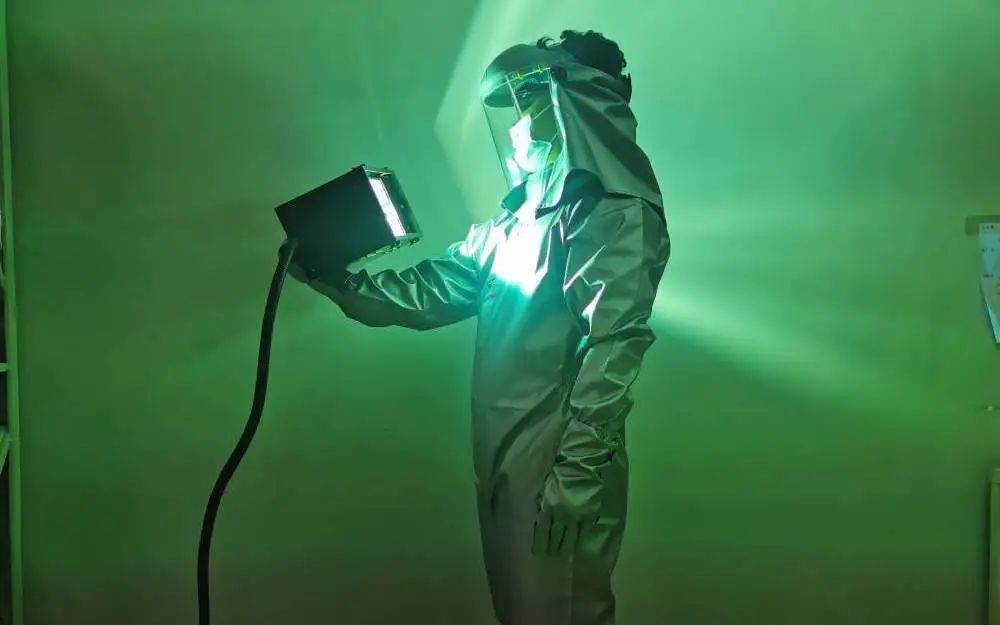Coated fabric: It is a kind of fabric treated by special technology. It can…
Applications of Flame Retardant Materials in Military Textiles
Table of Contents
- Definition of military textiles
- Flame retardant fiber classification
- Application of flame retardant materials in military textiles
- Application of flame-retardant materials in military clothing
- Application of flame-retardant materials in bulletproof clothing and bulletproof helmets
- Application of flame retardant materials in other military equipment
- Research focus and development trend of flame-retardant fibers and products
Definition of military textiles
Among the various types of military equipment, weapons are the most concerned. However, a large category of military equipment is textiles. From military uniforms to related soft textile materials are the basis for ensuring combat effectiveness. Military textiles not only refer to military uniforms, but also some other military essential materials, such as individual protective equipment, sanitary first aid supplies, and firearms textiles. Due to the special working environment of military and police personnel, flame-retardant materials are widely used in military textiles, such as flame-retardant camouflage training suits, ordinary flame-retardant overalls, explosion-proof blankets, and EOD suits.
Flame retardant fiber classification
With the application and development of high technology in modern warfare, the requirements for the protection level of equipment continue to increase. On the battlefield, high-temperature flames are a major factor that causes officers and soldiers to lose combat effectiveness and cause personal injury. Therefore, as the last line of defense against fire and high temperature, flame-retardant combat uniforms can continue combat effectiveness and win survival opportunities. Flame-retardant fiber materials are widely used in various military textiles.
Flame-retardant fibers include intrinsic flame-retardant fibers and modified flame-retardant fibers. Fibrous materials can be regarded as two stages of thermal oxygen degradation and combustion during combustion. Due to heat, they will decompose into combustibles in the air. When the temperature and its concentration reach the ignition point, combustion will occur. In the entire combustion process, there are processes such as heat convection, heat radiation and heat conduction. According to the burning state of the fiber material, it can be divided into flammable fiber, combustible fiber, flame-retardant fiber and non-combustible fiber. Flame-retardant fibers refer to fibers with a limiting oxygen index greater than 25%.
Essential flame-retardant fibers mainly include high-performance flame-retardant fibers such as aramid 1313, aramid, polyphenylene sulfide, polyimide, polyaroxydiazole, PBO, and PBI. At present, my country has gradually acquired production technologies such as aramid 1313, aramid sulfonamide, Baodelun, and polyimide, but the prices are too high, and most users are still difficult to accept. In addition, it is difficult to dye, and the price of dope-colored fibers is higher.
Modified flame-retardant fiber refers to the addition of flame-retardant to the fiber, mainly including flame-retardant viscose, flame-retardant vinylon, acrylic chloride, flame-retardant polyester, etc. However, these low- and medium-priced flame-retardant fibers also have low strength , Poor spinnability, smoke, even toxic, poor comfort and other shortcomings. Thermoplastic fibers such as flame-retardant polyester are prone to droplets, which may cause burns. Therefore, a combination of multiple fibers is required to achieve a high cost-effective flame-retardant function.
Application of flame retardant materials in military textiles
An important part of military textiles is military clothing, including two categories: general clothing and special clothing. In addition, there are some equipment, such as sanitary first-aid supplies, such as triangle bandages, stretcher cloth, gauze, bandages; textiles for firearms, such as ammunition bags, gun jackets, bomb covering cloths, and gun wipes; textiles for transportation, such as car tents Helicopter dust cover; individual protective equipment, such as bulletproof vests, life jackets, lightning boots, bulletproof helmets, backpacks, parachutes, equipment belts and harnesses, climbing ropes, etc., are inseparable from textiles.
Application of flame-retardant materials in military clothing
Military uniforms are highly demanding in terms of their ability to withstand the external environment, and should have certain special functions to meet the needs of training and battlefields. The fundamental role of military uniforms is to adapt to specific situations of war and to give play to their advantages in combat. In the assault of gunpowder and gunfire, military uniforms must have certain fire-retardant functions.
Flame-retardant fabrics are mainly made in two ways. One is to make fabrics from ordinary fibers and then make them through a flame-retardant finishing process. The other is to use intrinsic flame-retardant fibers to make flame-retardant fabrics through spinning, dyeing and finishing processes.
Ordinary textile fibers and their fabrics are all flammable or flammable polymer materials. After finishing the flame retardant on the fabric, ordinary fabrics can be made into flame retardant fabrics. The other is to add various flame retardants (including phosphorus, silicon, halogen, boron, nitrogen flame retardants and Compound) to achieve the flame retardancy of the fiber. The flame retardant fabric prepared by the former has excellent dyeability, which brings convenience to the dyeing of flame retardant camouflage fabrics, and the price is low, but generally has low strength, especially low tear strength, hard hand feeling, and flame retardant effect. Intolerance to washing and other issues. If the latter forms a multi-element synergistic effect in the process of designing the flame retardant formula, its flame retardant performance can be significantly improved, but the modified flame retardant fiber is based on ordinary man-made fibers, and has poor temperature resistance and strength. , And it is toxic with smoke when burned, such as acrylonitrile fiber and flame-retardant viscose fiber. Thermoplastic fibers such as modified flame-retardant polyester and flame-retardant nylon may melt and drip when exposed to heat, which poses the threat of skin burns.
The intrinsic flame-retardant fiber itself has excellent flame-retardant and high-temperature resistance, such as meta-aramid fiber, polyimide fiber, aramid sulfone fiber, polyarylate fiber, polyarylene oxadiazole fiber, polyether ether ketone fiber, poly Amide-imide fiber, polyparaphenylene benzobisoxazole fiber, etc.
Application of flame-retardant materials in bulletproof clothing and bulletproof helmets
Body armor refers to protective clothing that can effectively protect various ballistic projectiles. After World War II, modern versions of body armor gradually appeared. At present, body armor has become an indispensable material and equipment for the military. Hard materials for body armor have the disadvantage of heavy weight and inconvenience to wear. For example, the material used in bullet-proof vests in the past is multi-layer “bullet-proof” nylon fabric. The main disadvantage of this material is that it is too heavy, and its elasticity becomes poor after being wet. Form a non-breathable layer. Later researchers used textile fiber materials for the production of bulletproof vests, which significantly reduced the weight, was more designable and could achieve large-area protection advantages, so it was widely used. The most widely used bulletproof materials are mainly aramid, ultra-high molecular weight polyethylene fibers and liquid crystal polymer substrate fibers. Para-aramid 1414 is widely used in the field of safety protection because of its good heat-resistant, flame-retardant, high-strength and high-modulus properties, and its dosage is increasing year by year.
PBO fiber is an essential flame retardant material superior to aramid fiber. It has excellent heat resistance, flame retardancy, shear resistance, and abrasion resistance. Its maximum impact load and energy absorption are much higher than that of carbon fiber and aramid fiber. It is also used to make fighter fuselages, body armor, bulletproof helmets, etc.
Application of flame retardant materials in other military equipment
In modern warfare, new types of artillery, nuclear, chemical, and biological threatening weapons have far exceeded ordinary weapons. Therefore, protective clothing is widely equipped in various individual preparations. In military equipment, such as life rafts, tents, camouflage nets, tactical shelters, equipment belts, rigid walls, sleeping bags, tarpaulins, inflatable boats, car covers and gun jackets, fuel tanks, portable soft fuel tanks, parachutes and others Airdrop equipment, etc., all use textiles made of flame-retardant fiber raw materials. This type of flame-retardant protective equipment also reflects the development trend of military textiles’ informationization, multi-function and high-tech.
Research focus and development trend of flame-retardant fibers and products
Combustion performance and thermal stability are the two main directions of material flame-retardant mechanism analysis. At present, most flame-retardant fibers have defects in price or performance. High-performance, low- and medium-priced flame-retardant fabrics must be compounded get. However, during the combustion process, the composite fibers will interact to produce a synergistic effect. At present, the mechanism and research methods of the synergistic effect between the fibers are not yet mature. Therefore, there are two main problems that need to be solved in the follow-up: one is to explore a method that can quickly compound the composition and proportion of flame-retardant fibers; the other is to research and obtain cost-effective flame-retardant fabrics.
The future development direction of military textiles lies in emphasizing environmental protection, diversified use of fibers, highlighting the functionality of battlefield protection, and developing comfort, health, and intelligence. In addition, a large amount of flame retardants are used in the flame retardant finishing process, but with a series of environmental protection policies issued by Europe, the use of flame retardants has been indirectly curbed. Therefore, the development of green and ecological military textiles that are environmentally friendly and harmless to humans has become a major mainstream direction.




This Post Has 0 Comments